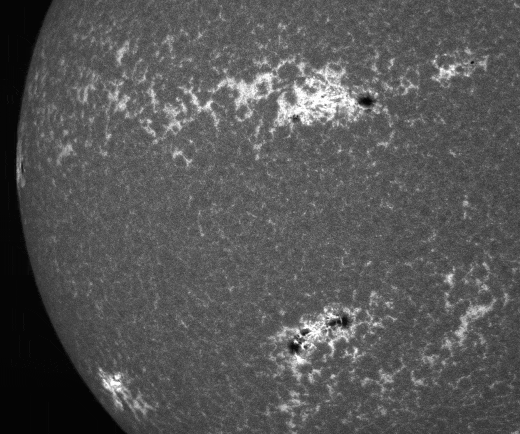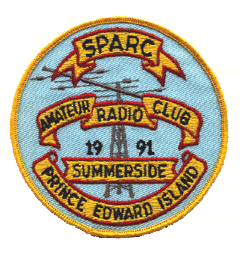SFI = 153
A index = 7
K index = 1
SSN = 113
ACTIVE SUN: Spoiler alert: Something on the sun is about to explode. “There is an incredible-looking sunspot crossing the center of the solar disk and a new large dark core has just appeared on the limb,” reports Illinois astronomer Apollo Lasky, who photographed the seething starscape:


The active regions in Lasky’s video are mostly new. They either appeared for the first time or ballooned in size from an existiing spot over the weekend. One of them, sunspot AR3055, is truly awesome, stretching more than 100,000 km from end to end with more than a dozen dark cores. It is almost directly facing Earth, and poses a threat for strong flares.
To make the video, Lasky capped his telescope with a solar filter tuned to the glow of ionized calcium (CaK). CaK filters are excellent detectors of “sunspot froth”–the bubbly, turbulent sea of magnetism that surrounds active sunspot groups. Every sunspot in the video is surrounded.
NOAA STI
:Product: Geophysical Alert Message wwv.txt
:Issued: 2022 Jul 11 0905 UTC
# Prepared by the US Dept. of Commerce, NOAA, Space Weather Prediction Center
#
# Geophysical Alert Message
#
Solar-terrestrial indices for 10 July follow.
Solar flux 153 and estimated planetary A-index 7.
The estimated planetary K-index at 0900 UTC on 11 July was 1.
Space weather for the past 24 hours has been minor.
Radio blackouts reaching the R1 level occurred.
Space weather for the next 24 hours is predicted to be minor.
Radio blackouts reaching the R1 level are likely.
NOAA Alerts
Space Weather Message Code: WATA20
Serial Number: 916
Issue Time: 2022 Jul 11 0934 UTC
WATCH: Geomagnetic Storm Category G1 Predicted
Highest Storm Level Predicted by Day:
Jul 12: None (Below G1) Jul 13: G1 (Minor) Jul 14: None (Below G1)
THIS SUPERSEDES ANY/ALL PRIOR WATCHES IN EFFECT
NOAA Space Weather Scale descriptions can be found at
www.swpc.noaa.gov/noaa-scales-explanation
Potential Impacts: Area of impact primarily poleward of 60 degrees Geomagnetic Latitude.
Induced Currents – Weak power grid fluctuations can occur.
Spacecraft – Minor impact on satellite operations possible.
Aurora – Aurora may be visible at high latitudes, i.e., northern tier of the U.S. such as northern Michigan and Maine.
